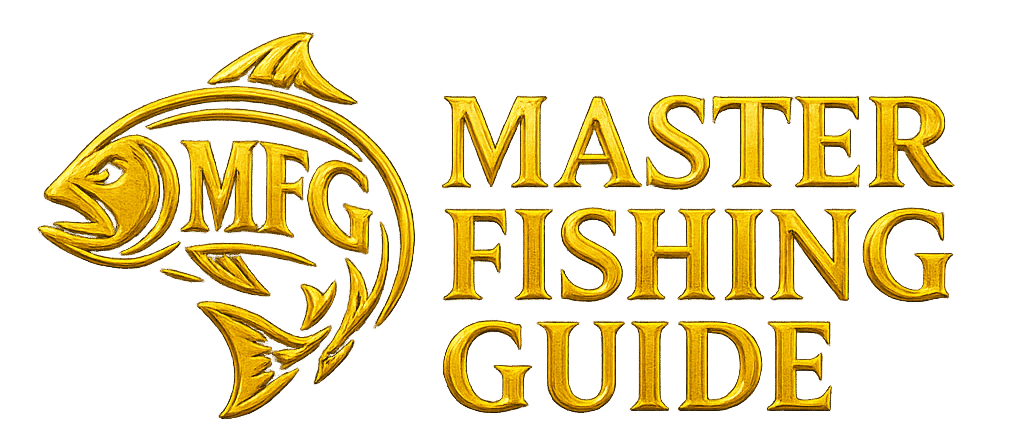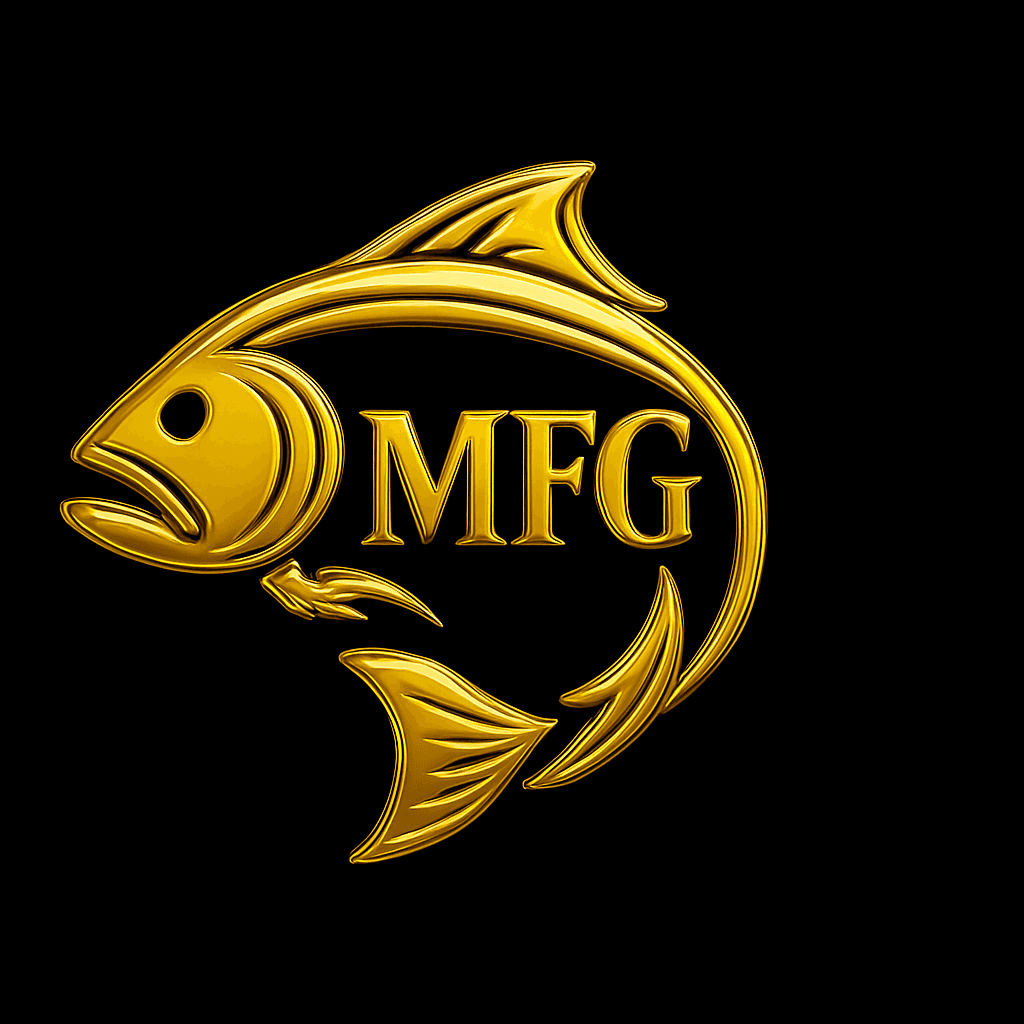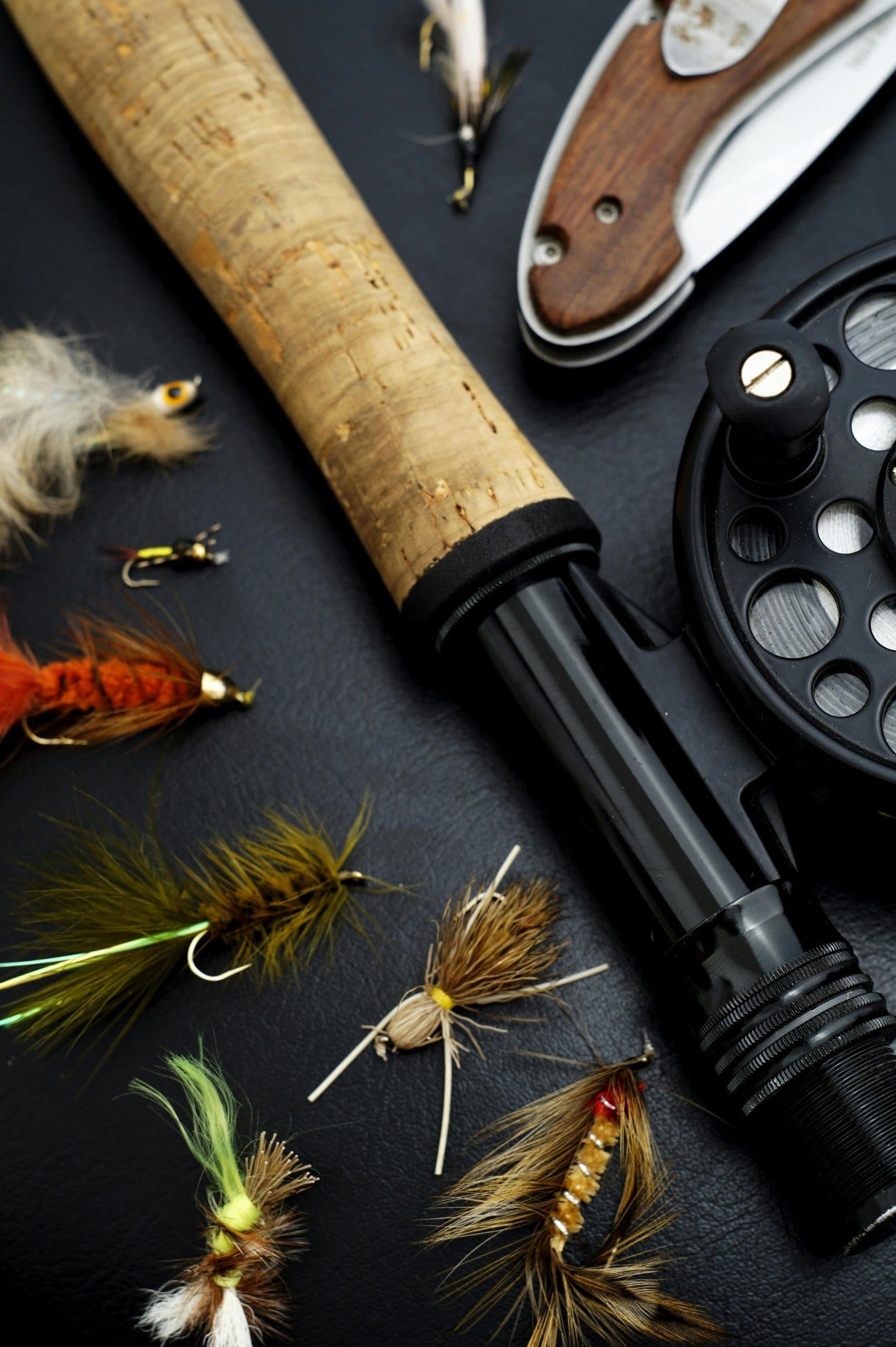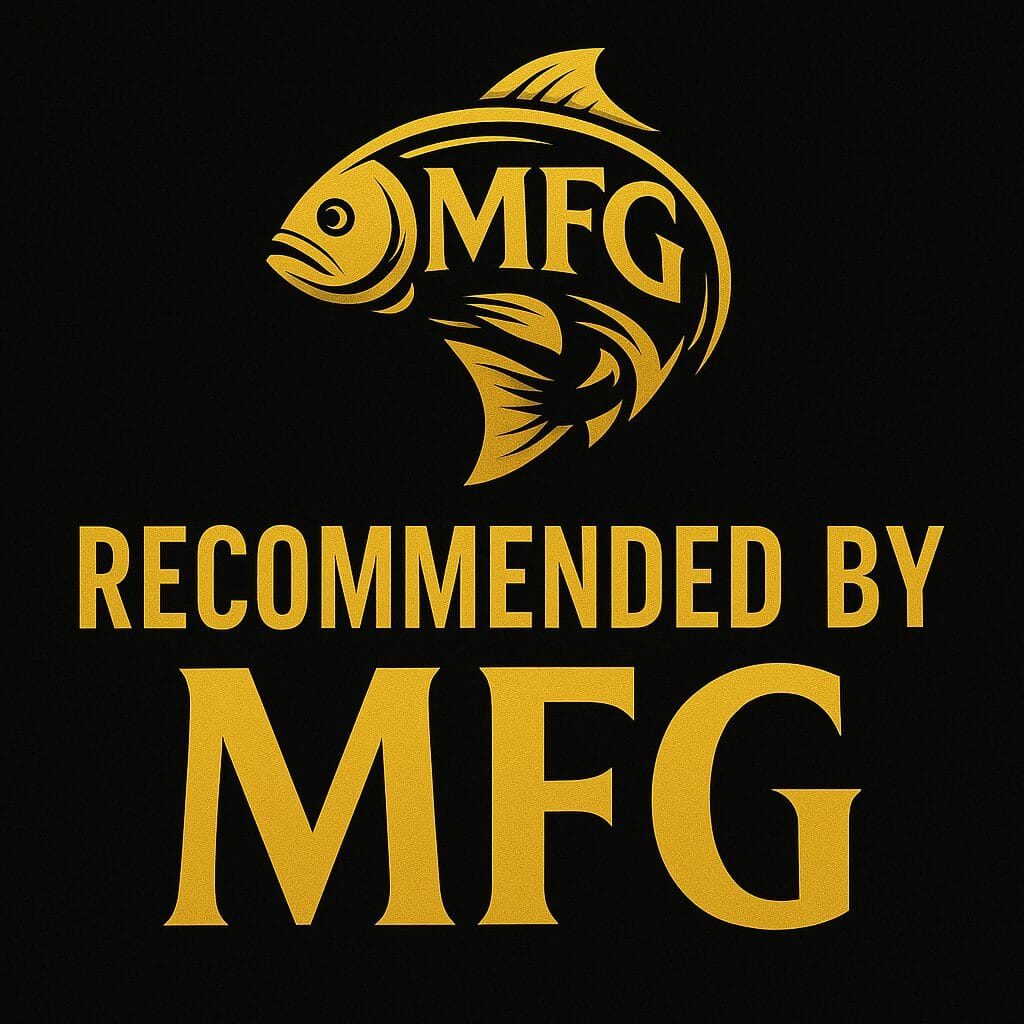Best Fly Fishing Guide – Gear, Tips & Pro Advice
As an Amazon Associate, we earn from qualifying purchases — no cost to you. That’s how we keep this site running. Read more ›
Fly Fishing for Beginners – The Ultimate Starter’s Guide
Fly fishing is more than just a method of catching fish — it’s a blend of art, skill, and an intimate connection with nature. Unlike other fishing techniques where the weight of the lure propels the cast, fly fishing relies on the weight of the line itself to deliver a near-weightless fly with grace and precision. The goal is to mimic the delicate behavior of insects on or beneath the water’s surface, tricking fish into striking without suspicion.
This technique has captured the hearts of anglers for centuries, offering a meditative rhythm in every cast and retrieve. From crystal-clear mountain streams teeming with trout to sprawling rivers alive with salmon, fly fishing is both a challenge and a reward. It demands patience, attention to detail, and a willingness to constantly learn and adapt — making every outing a unique experience.
In this comprehensive guide, we’ll explore the history, essential gear, casting techniques, and strategic approaches to fly fishing so that you can step onto the water fully prepared. Whether you’re a beginner eager to learn the basics or an experienced angler looking to refine your skills, this guide will give you the tools and confidence to make every cast count.
Fly Fishing History – From Ancient Rivers to Today’s Waters
The origins of fly fishing trace back more than 2,000 years, with some of the earliest recorded methods appearing in ancient Macedonia. Anglers of the time crafted artificial flies using wool and feathers to imitate the appearance of local insects, presenting them to trout in fast-flowing rivers. This innovative approach laid the foundation for a technique that would eventually spread across continents.
Fly fishing as we know it today began to take shape in 15th-century England and Scotland. Early fly anglers relied on long, supple rods made from greenheart or ash wood, silk lines, and hand-tied flies that imitated mayflies, caddisflies, and other aquatic insects. The sport was not only a means of securing food but also a leisure activity enjoyed by the aristocracy and river keepers alike.
Over the centuries, fly fishing evolved alongside advancements in materials and technology. Bamboo replaced wood for rod construction in the 19th century, followed by fiberglass and graphite in the 20th century, each offering greater precision and durability. Modern fly lines, synthetic tippets, and a vast range of meticulously crafted flies have expanded the possibilities of the sport, making it more accessible and effective than ever before.
Today, fly fishing is practiced in almost every part of the world, from remote alpine lakes to saltwater flats. Its blend of tradition, craftsmanship, and adaptability ensures it remains one of the most respected and rewarding forms of angling in existence.
Fly Fishing Basics – 10 Core Principles to Catch More Fish
Forget gimmicks—fly fishing is about presentation, control, and timing. You’re not throwing a heavy lure; you’re delivering a nearly weightless fly using the mass of the line. When you master how the rod loads, how the loop travels, and how the line lands, you control what fish see: a natural, believable meal. Below is the blueprint I drill into every student—from first cast to first trophy.
1) Rod Loading & Loop Shape
The rod bends (loads) as you accelerate the line; it unloads as you stop. Smooth acceleration, crisp stop. That creates a loop—the tighter the loop, the more accurate and wind-cutting your cast. Open the loop for wind-resistant flies or when you want the fly to land softer. Practice on grass: ten and two o’clock stroke, watch the loop tip to tip.
- Tight loop: accuracy, distance, piercing wind.
- Open loop: softer landings, big/air-resistant flies.
- Timing rule: wait until the back cast straightens before starting the forward cast—listen for the “whisper,” not the “whip.”
2) Minimal False Casting & Controlled Line Speed
False casts are for changing direction, drying a dry fly, or adding line—not for showing off. Each extra wave risks spooking fish. Build speed with a compact stroke, then stop hard. When you need distance, add a single or double haul—short, sharp pulls on the line to supercharge the loop without flailing your arm.
3) Presentation Is Everything
Fish don’t analyze brands; they react to how the fly behaves. Land it first, then let the water complete the lie. Prioritize a quiet landing (leader straight, fly first), correct angle relative to current, and immediate line control.
- Fly first: present from upstream so leader and line don’t cross the fish’s window.
- Trajectory: aim slightly above the target; let the drift carry it in.
- Distance discipline: fish close water first—most spooked fish are within your shadow.
4) Drag-Free Drift & Mending
Currents rarely move in one speed. If your line pulls the fly unnaturally, you get refusals. A drag-free drift means the fly travels at the current’s pace with zero micro-tension. Mend by subtly flipping upstream (or downstream for certain angles) to reposition line segments without moving the fly.
- Upstream mend: slows the fly, extends drift on dries and emergers.
- Downstream reach cast: build slack during delivery to start drag-free.
- Stack mends: feed short coils to extend drifts at distance.
5) Line Control & Strike Detection
Line management is the difference between “I had a bump” and “Fish on.” Keep line off the water when possible (high-stick, raised rod tip), strip slack smoothly, and watch for any anomaly: pause, twitch, micro-stop. With nymphs, set on everything suspicious.
- Trout set (dries/nymphs): lift the rod smoothly upstream.
- Strip set (streamers/salt): keep the rod low, pull with the line hand to drive the hook, then raise.
- Contact nymphing: short line, tight to the fly, feel the tick—set fast.
6) Reading Water & Stealthy Approach
Fish live where energy is favorable: seams, foam lines, tail-outs, behind structure. Approach from downstream/side, stay low, and use the bank as cover. Your first cast is your best cast—don’t waste it thrashing line.
- Seams: boundary of fast/slow water—natural conveyor belt of food.
- Depth transitions: heads/tails of pools at light changes.
- Foam is home: foam lines mark feeding lanes—drift your fly there.
7) Match-the-Hatch Basics (Size > Shape > Color)
Start with size. If your fly’s silhouette matches the natural, you’re close. Next, shape/profile, then color. Observe: what’s in the air, on the water, and in the current seams? If fish are rising but ignoring dries, they’re likely on emergers—drop a film-sitter or add a soft-hackle.
8) Leaders & Tippet—Turnover vs. Stealth
A tapered leader turns the fly over; a finer tippet adds stealth and natural drift. Wind, big flies, or distance? Go shorter/stiffer. Fussy trout in glassy water? Go longer/finer. Typical trout start: 9–12 ft leader, 4X–6X tippet depending on fly size and clarity.
9) Common Mistakes & Fast Fixes
- Cracked leader landings (slap): smooth acceleration, shorter stroke, lower trajectory.
- Tail-ing loops (wind knots): stop creeping; widen the casting arc slightly; haul later.
- Drag instantly: add a reach cast or stack mend; lengthen tippet one size.
- Missed strikes: commit to trout set (up) for dries/nymphs, strip set (down/line) for streamers/salt.
10) Coach Drills That Change Everything
- Paint the wall: practice straight tracking—imagine casting along a wall so the tip travels in a straight line.
- Back-cast pause: count “one-one-thousand” until the line straightens—then go.
- Reach on delivery: present, then reach upstream with the rod tip as the fly lands to bake in slack.
- Strip-strike reps: 20 quick line pulls with rod low; build muscle memory.
Nail these fundamentals and you’ll fish with intent, not hope. The rest—flies, brands, fancy gadgets—only amplify skills you already own. Next up, we’ll translate principles into casting techniques you can use in real water, under real pressure.
Best Fly Fishing Flies – Complete Assortment for Every Situation
Having the right fly for the right conditions can make or break your fishing day. A complete fly assortment ensures you’re ready for any hatch, weather change, or fish mood swing. Here’s what’s inside a well-rounded fly selection:
Dry Flies
Designed to float on the water’s surface, dry flies imitate adult insects like mayflies, caddisflies, and stoneflies. Perfect for sight fishing when trout are rising.
Wet Flies
Wet flies sink below the surface, mimicking drowned insects, emerging nymphs, or small baitfish. They work best when fish are feeding just under the water.
Nymphs
Nymphs imitate immature aquatic insects living underwater. Since fish feed on nymphs most of the time, they are essential in every fly box.
Streamers
Larger flies that imitate minnows, leeches, or crayfish. Streamers are great for targeting aggressive fish like trout, bass, and even pike.
Emergers
Emergers represent insects transitioning from nymph to adult stage. They sit in the film just under or on the surface, irresistible to selective fish.
Fly Fishing Flies Chart – Best Patterns, Uses & Target Species
| Fly Type | Best Use | Target Species |
|---|---|---|
| Dry Flies | Imitating adult insects on the water’s surface during hatches | Trout, Grayling |
| Wet Flies | Mimicking drowned insects or emerging nymphs below the surface | Trout, Steelhead |
| Nymphs | Imitating immature aquatic insects drifting underwater | Trout, Bass |
| Streamers | Imitating baitfish, leeches, or other swimming prey | Pike, Bass, Large Trout |
| Emergers | Representing insects transitioning from nymph to adult stage | Trout, Grayling |
Fly Fishing Gear – What You Need & Where to Get It
The right gear in fly fishing doesn’t just make casting easier – it determines how effectively you can present the fly, fight fish, and enjoy the day on the water. Below are the key categories of equipment every fly angler should know about, along with recommendations you can check out for yourself.
Fly Rods – Choosing the Right Length, Weight & Action
Fly rods are rated by weight (WT) and length, with lighter rods for smaller fish and heavier rods for bigger species or windy conditions. Action affects casting style and presentation. For beginners, a 9-foot, 5WT rod is a versatile starting point.
Fly Rods – Best Seller
The Moonshine Rod Co. Fly Fishing Rod delivers premium performance for anglers who want precision, durability, and style in one package. Built with high-quality graphite and featuring a slow-medium-fast action, it offers incredible casting control whether you’re fishing small streams or big rivers. Comes with a sturdy carrying case and an extra tip section, so you’re always ready for action — no matter where the water takes you.
Fly Reels – Best Seller
The Piscifun Sword Fly Fishing Reel is Amazon’s current #1 best seller in the fly fishing category, delivering a perfect balance of strength, smoothness, and lightweight performance. Crafted from CNC machined aluminum alloy, it ensures outstanding durability while keeping the weight low for effortless casting. The precision drag system offers smooth control in any fishing situation, and it’s available in multiple sizes (3/4, 5/6, 7/8, 9/10) to match your rod and style. With color options like Black, Gunmetal, Pink, and Green, it’s both a high-performance tool and a stylish addition to your fishing setup.
Fly Lines Guide: Floating, Sinking & Intermediate – Which One Do You Need and Why
Choosing the right fly line can make the difference between a perfect cast and a frustrating day on the water. Fly lines come in three main types – Floating, Sinking, and Intermediate – each designed for specific fishing conditions. Below, you’ll find out exactly what each type does and when to use it.
Floating Fly Line
Floating fly lines are designed to stay on the surface, making them perfect for dry flies, poppers, and other topwater presentations. They are easy to handle, highly versatile, and great for both beginners and seasoned anglers. Use them when fish are feeding at or near the surface.
Full Sinking Fly Line
Full sinking fly lines are built to get your fly down to the depths quickly and evenly. They are ideal for targeting fish holding near the bottom or in deep pools, and are perfect for fishing with streamers, nymphs, or large prey imitations. These lines maintain a direct connection to your fly for better strike detection.
Intermediate Fly Line
Intermediate fly lines sink slowly, staying just below the surface – typically at 1–2 inches per second. They are perfect for clear water and spooky fish that avoid topwater presentations. These lines give you a subtle, controlled presentation while avoiding surface disturbances caused by wind or waves.
Fly Fishing Leaders & Tippets Guide – Stealth & Control
Leaders and tippets are the vital link between your fly line and the fly itself. They provide the stealth needed to fool fish and the control to deliver your fly accurately. There are different types, each with a unique purpose in fly fishing.
Monofilament Leaders
Monofilament leaders are buoyant and supple, making them ideal for dry fly fishing and situations where you want your leader to float. They are easy to knot and generally more affordable.
Fluorocarbon Leaders
Fluorocarbon leaders sink faster than monofilament and are nearly invisible underwater, making them perfect for nymphs, streamers, and situations where stealth is crucial. They are also more abrasion-resistant, which is useful when fishing around rocks or structure.
Tippets
Tippets are the final, thinnest section of your leader, attached directly to the fly. They are available in both monofilament and fluorocarbon materials and are measured by diameter or “X” rating (e.g., 5X, 6X). Replacing the tippet instead of the whole leader helps maintain stealth while saving cost.
Best Fly Fishing Clothing & Gear – Stay Comfortable and Buy the Right Equipment
Fly fishing can be an all-day adventure, and the right clothing and protective gear can make the difference between comfort and misery. Whether it’s keeping your feet dry, shielding yourself from the wind and rain, or protecting your skin from harmful UV rays, choosing quality gear is essential. Below are my top recommendations for each category.
Waders
A good pair of waders will keep you dry and comfortable, allowing you to reach those perfect fishing spots without worrying about cold water soaking through.
Waterproof Jackets
Stay dry in any weather with a high-quality waterproof jacket, designed to keep the rain out while still allowing breathability.
Fishing Vest
A fishing vest keeps all your essential gear within arm’s reach. With multiple pockets, attachment loops, and lightweight materials, it offers comfort and efficiency for long days on the water.
Hats & Gloves
Protect your head, face, and hands from the sun, wind, and cold. A good hat and gloves set is essential for year-round fly fishing.
Fly Fishing Casting Techniques – Master Every Cast
In fly fishing, your cast is more than just a way to send the fly out – it’s how you present it naturally, control the line, and trigger the fish to strike. Here are the four fundamental casting techniques every angler should master, plus when to use each for the best results.
Roll Cast
Perfect for situations where you don’t have room for a full back cast, such as when trees, bushes, or cliffs are behind you. The roll cast keeps your line mostly on the water, creating minimal disturbance. It’s ideal for small streams, tight quarters, and stealthy presentations.
Overhead Cast
The classic fly cast most beginners learn first. It involves a full back cast and forward cast, allowing for precise distance and accuracy. Best used in open areas with no obstructions behind you – great for rivers, lakes, and targeting distant fish.
Double Haul
An advanced version of the overhead cast that uses both hands to generate extra line speed. The double haul is perfect for casting heavy flies, punching through strong winds, and achieving maximum distance. It requires practice but pays off when targeting large, powerful fish in challenging conditions.
Sidearm Cast
Instead of casting overhead, you cast from the side. This keeps the line low to the water, useful for avoiding wind, skipping flies under branches, or achieving a subtle presentation. Sidearm casts also help reduce shadow casting on spooky fish.
When to Use Each Technique
- Roll Cast: Tight spaces, overgrown banks, stealth approaches.
- Overhead Cast: Open water, precision distance work.
- Double Haul: Windy days, long-distance shots, heavy flies.
- Sidearm Cast: Low-profile casts, under cover, reducing line shadows.
Mastering these casts means you can adapt to any fishing scenario – from calm alpine lakes to fast, turbulent rivers. The more versatile your casting skills, the more fish you’ll connect with.
Watch the Basics — Fly Fishing Casting Tutorial
This concise beginner’s fly fishing tutorial covers all the fundamentals—from casting techniques to gear overview. It’s perfect if you want a fast, visual refresher before hitting the water.
You can also watch this tutorial directly on YouTube .
Best Time to Fly Fish – Seasonal, Weather & Temperature Guide for Bigger Catches
Season
Each season brings unique opportunities and challenges for fly fishing. Spring offers rising water levels and active fish after the winter slowdown, while summer provides long days and warm temperatures, perfect for early morning and late evening sessions. Autumn often delivers aggressive feeding before winter, and winter itself can reward the patient angler with fewer crowds and slower, deeper presentations.
Weather & Temperature
Weather plays a huge role in fish behavior. Overcast days often encourage fish to feed more actively, while bright, sunny conditions may push them to deeper or shaded areas. Ideal water temperatures vary by species, but in general, trout prefer 10–16°C (50–60°F), and warmwater species like bass are most active between 20–26°C (68–78°F). Sudden drops or rises in temperature can slow feeding, so steady conditions usually mean better action.
Fish Activity
Understanding fish activity patterns is key to success. Most species feed more during low-light periods – dawn, dusk, or on cloudy days. Seasonal food availability, water clarity, and insect hatches all influence how and when fish bite. Observing surface activity, bird behavior, and insect presence can give you a real-time edge in deciding where and how to cast.
Keep Learning – Your Next Fly Fishing Adventure Awaits
Fly fishing is a journey of constant learning, and every trip to the water teaches something new. If you enjoyed this guide and want more expert tips, techniques, and gear recommendations, explore our other resources on Master Fishing Guide. Start with our Lure Fishing Guide to discover even more ways to improve your skills and catch more fish.



